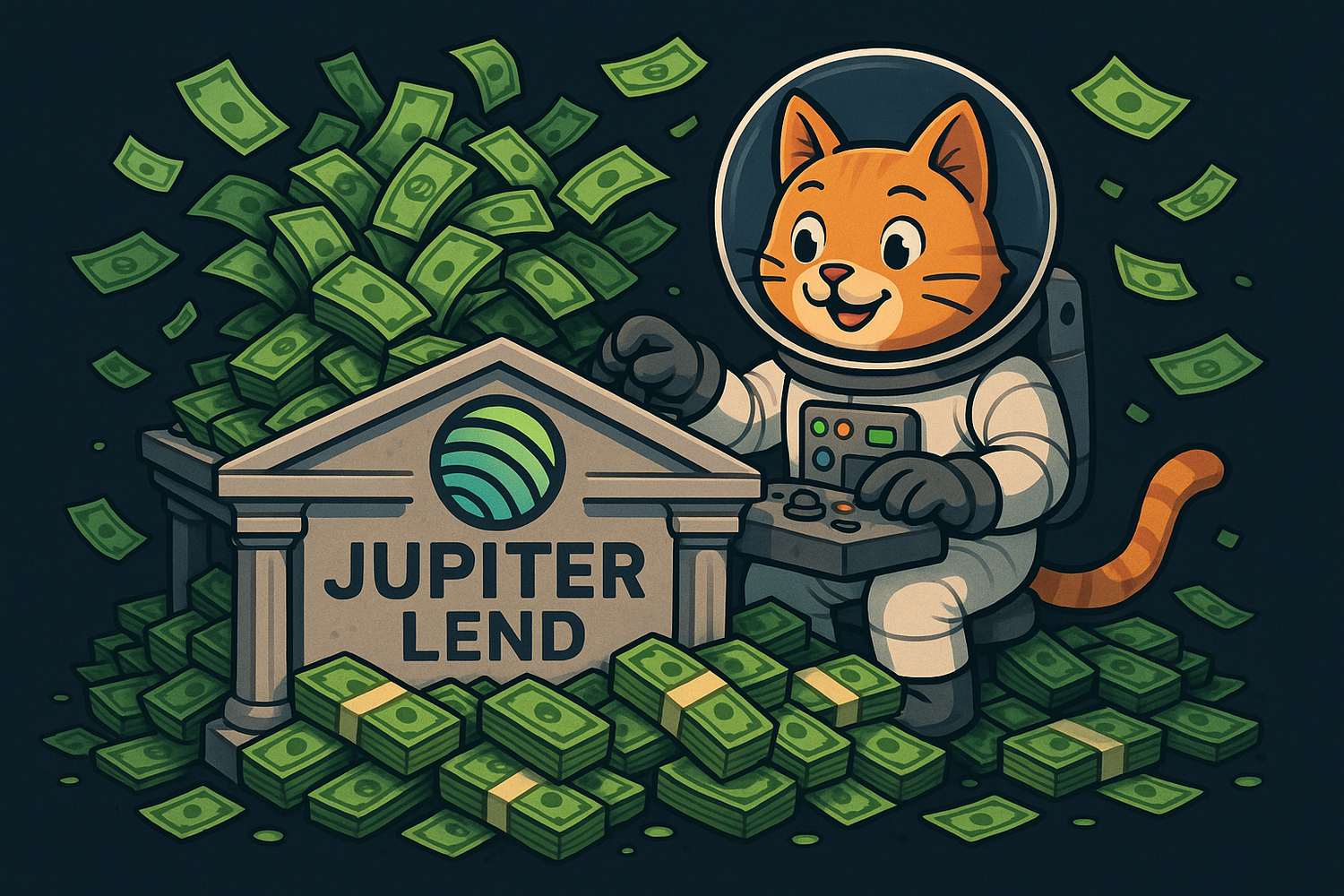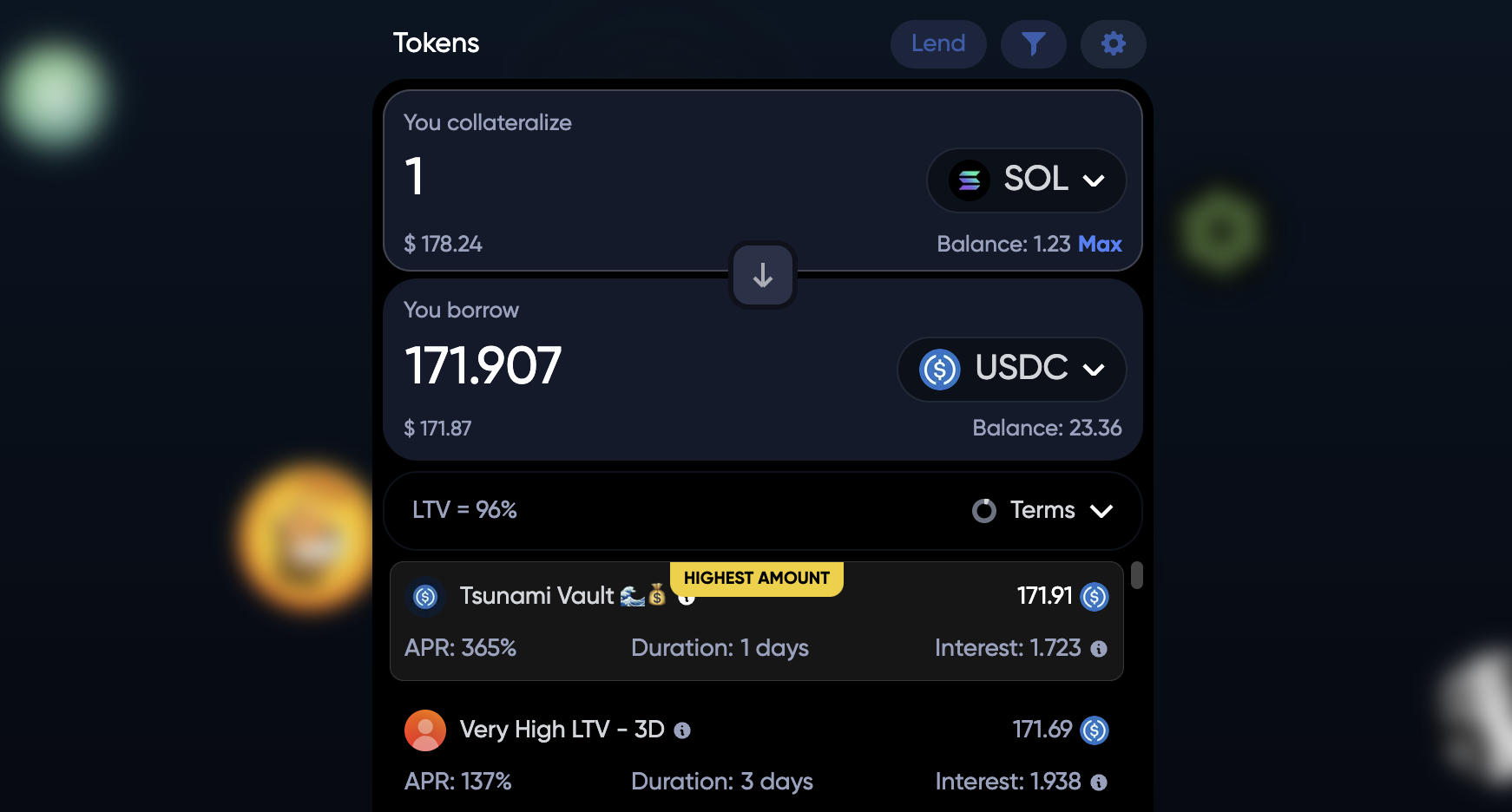
「本物のエッジだ」-ジュピターレンドのアーキテクチャに楽観的なカシュ・ダンダ
SolanaFloorはCat Herderと対談し、ユピテルの最新製品についてアルファ版を入手した。
- 公開:
- 編集済み:
ジュピターの軌道は先週さらに大きくなり、DeFiのスーパーアプリは、その広大な製品群に新たな業種を追加した。
アクセラレートで、ジュピターのカシュ・ダンダは、DeFiの巨人がソラナの競争の激しい融資市場に参入し、ジュピターの経験をオンチェーン金融の基礎となる柱の1つにもたらすと発表した
。ソラナフロアの独占取材に応じたダンダ氏は、ジュピターの融資アーキテクチャが競合他社を凌駕しうる理由を論じ、ソラナDeFiの次の波に対する彼の抱負を概説した
。ジュピター、ソラナDeFiで最高のLTVを提供か?
ソラーナの融資市場は競争が激しい。傭兵資本はオンチェーン経済の活力源であり、預金者は可能な限り高い利回りを求めて、平気でアプリ間で資金を回転させています。
プロトコルのネイティブ・アーキテクチャに自信を持つDhanda氏は、Jupiter Lendが資本効率を最適化し、Solana&rsquo's DeFi&rsquo's最高の金利を提供すると主張している。Cat Herderは、Jupiter Lendの真の優位性は、統一された流動性レイヤー、市場をリードするLTV比率、低い清算手数料にあると主張している。
理論的には、統一された流動性レイヤーを持つことは、プロトコルに大きな柔軟性を与え、ジュピターレンドは非常に競争力のあるLTVを提供することができます。LTVが高ければ、借り手は担保の資本効率を最大化することができ、ジュピター・エンドは本質的に富を活用するためのより魅力的な場となる。“Jupiter Lendには2つのレイヤーがあります。流動性レイヤーにはすべての流動性があり、その上に構築されたあらゆるプロトコルで利用することができます。Multiplyや従来の金庫に預けるのではなく、Jupiter Lendでは流動性レイヤーに預けるだけです。そして、他のマーケットがそれをどのような方法で使おうとも、私たちはそれを利用することができます。そして、それはより良いLTVのようなものにつながるのです。
90%のLTVで担保付き融資を促進することが、本当に利用者の安全のためになるのかどうかという質問に対して、ダンダはリバタリアン的な回答をした。機会がDeFiの核心であることを指摘したダンダは、ジュピターがユーザーの手を握ることを望んでいないことを示唆した。その代わりに、ジュピターはユーザーにリスク許容度に基づいて資本を最大限に活用する選択肢を与えることを主張している。“他のプラットフォームでは75%程度であるのに対し、ソルでは90%程度になると予想しています。貸し借り市場にとって、これは本当に重要なことです。担保がどれだけ優れていて、そこからいくら引き出せるか。担保として使いたいのであれば、担保からより多くのマイルを得られるようなところに行くでしょう。そのため、一般的にLTVが高いと、より多くの資本を集めることができます。
“But I think that giving people the opportunity to use their capital in whatever ways they find most productive, really like the essence of DeFi, right?私たちは学校の先生として、こうすべき、こうすべきでないということを教えるためにここにいるわけではありません。私たちは、あなたにとってそれがどのような意味を持つにせよ、あなたが技術から最大の価値を引き出せるように、技術を限界まで押し上げたいのです。比較のため、ソラナDeFi&rsquoの報道時点における最高LTVは、RainFiが提供しているもので、短期固定期間ローンで最大96%のLTVを提供しています。

しかし、ジュピターレンドのローンが無期限であることを考えると、LTVをKamino Financeのような同様のアプリケーションと比較する方がより正確でしょう。Kaminoは現在、80% LTVのオープンエンドローンを特定の市場で提供している。
最後に、Dhanda氏はJupiter Lend&rsquoの清算エンジンを、このプロトコルの高いLTVを可能にする重要な要因の1つだと評価している。ライバルのマネー・マーケットが通常2.5%~10%の清算手数料を取るのに対し、ジュピター・レンドは0.1%という低い手数料を取る予定であり、借り手はより余裕のあるポジションを持つことができる。
ジュピター・レンドは誰が作っているのか?“Traditional liquidation engines will charge you somewhere between two and half to 10%, typically, as if your collateral lose value.当社の設計では...そのペナルティーを10bpsに抑えることができます。[0.1%)
Jupiter’の製品の大部分は社内で構築されるか、買収されて成長中のDeFiスーパーアプリに吸収されるのですが、それとは異なり、Jupiterは貸出製品の開発を合理化するために旧友に目を向けました。
その名前とブランドにもかかわらず、ジュピターレンドは、TVLで22億ドルを超えるEVMベースのマネーマーケットであるFluidによって運営されている。Dhanda氏によると、FluidとJupiter’の創業チームは、かなり昔にさかのぼる。FluidはJupiter Lendのアーキテクチャー・スタックを構築する手綱を任され、プラットフォームの流通と運営はJupiterが担当する。
イーサリアムファーストの開発者が別の仮想マシンでセキュアなプロトコルを再現するのに十分な設備があるかどうかを心配する人もいるかもしれませんが、Dhanda氏はユーザーが安心して利用できることを保証します。“Fluid とは、個人的なレベルで多くの歴史があります。FluidはFluidで動いていると言っても、それは文字通りの意味で、Fluidチームが技術の大部分を構築しているということです。
自分たちでアーキテクチャを構築していないにもかかわらず、ユピテルはまだ開発プロセスに関与している。セキュリティに関しては、DeFiプリミティブへの深い理解が、その実装と同じくらい重要であるとDhanda氏は断言します。“They have full access to our team, and our team has helped on some considerations of things that are unique between Ethereum and Solana.彼らがある日突然、それを完全に包んで私たちに提供し、ああ、私たちは彼らが私たちに与えるものを何でも使うだけだ、というようなことはありません。
“But 実際のところ、Solanaでコードを書く方法を学ぶことは、優れたDeFiプリミティブを構築する方法を学ぶことほど難しくはありませんよね。難しいのは、システムがどのように機能すべきか、アーキテクチャはどうあるべきかを概念化することであり、次にそれを実際に記述する言語だ。それがSolidityであろうとRustであろうと、実装の詳細の方が重要なのです。予想通り、このプロトコルは、他のジュピター製品と同様に、主要なブロックチェーンセキュリティ企業の監査を受けることになります。
DeFi3.0について。p
ジュピターレンドは2025年7月に稼働予定で、ソラナDeFiに新たな競争心を加える。RWAが着実にオンチェーンに移行する中、ダンダとジュピターのチームは、TradFiとDeFiが交差し、これまで排除されていたユーザーに新たな金融機会の世界をもたらすことを切望しています。
ソラナモバイルの$SKRのアルファは何ですか“私たちは、TradFiからであろうと他の場所からであろうと、Solanaに登場する資産の新しい波にとても興奮しています。DeFiは、伝統的な金融システムが実現することを妨げていた日常の人々の価値を、どこで解き放つことができるのでしょうか?ソラナフロアについてもっと読むソラナフロアについてもっと読む
ソラナモバイルの$SKRのアルファは何ですか?
Exclusive: Emmett Hollyer Break Down Latest Solana Seeker Announcements
DeFiとは?



